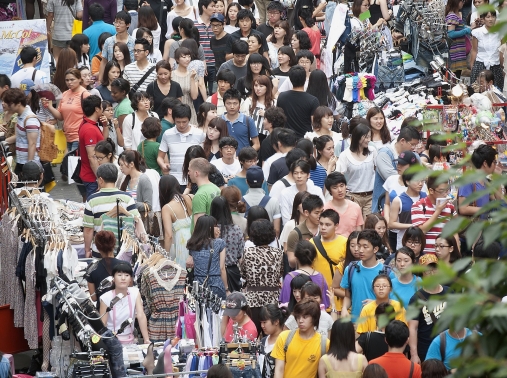|
|
RAND research and commentary on the issues that matter most
|
Aug 6, 2020
|
|
|
|
|
Photo by Cavin Mattheis/News Sentinel
|
|
|
|
To hold elections safely during the pandemic, states need registration and voting options that minimize personal contact, reduce crowds, and limit common access to high-touch surfaces, such as voting machines.
Do states' current voting processes support these safety measures? And if not, then what changes could they make between now and November? New RAND research aims to answer these questions—and to help state officials understand how new voting policies might affect public health and safety, as well as election integrity, access, and logistics. Read more »
|

|
|
Photo by vgajic/Getty Images
|
|
As the pandemic continues to surge, the vast majority of artists have likely lost some or all of their income. And while some businesses—restaurants and gyms, for example—are reopening, the arts are likely to be shut down for the foreseeable future. This could lead to millions of working artists and performers running out of unemployment benefits, losing their insurance, and possibly giving up on their arts careers altogether, say RAND experts. The CARES Act has provided some critical support, but more could be done.
Read more »
|
|

|
|
A levee gives way to high water in New Orleans, Louisiana, after Hurricane Katrina struck on August 31, 2005, photo by Marc Serota/Reuters
|
|
Strengthening back into a hurricane after being downgraded to a tropical storm, Isaias lashed the Atlantic Coast this week, leaving destruction in its wake. With hurricane season in full swing, there may be more powerful storms on the way. Earlier this summer, RAND experts wrote about how to prepare for hurricane response and recovery during a pandemic. There are many issues to consider, including the fact that response systems are already overwhelmed; the complications of evacuating and sheltering; and how to safely deploy emergency workers.
Read more »
|
|

|
|
A throng of shoppers in Myungdong, downtown Seoul, South Korea, July 17, 2011. Photo by United Nations/CC BY-NC-ND 2.0
|
|
North Korea maintains nearly 6,000 artillery systems within range of major South Korean population centers. According to estimates from a new RAND report, Pyongyang could use these conventional weapons to kill many thousands of people in just an hour. The authors conclude that, because so much harm could be done so quickly, it's important to avoid any situation where the North might feel compelled to initiate such a strike. So if a “provocation cycle” starts between North Korea and the United States, it's in everyone's interest to deescalate the situation as swiftly as possible.
Read more »
|
|

|
|
Naval War College President Rear Adm. Shoshana Chatfield, left, views the wargaming hub at the college's Naval Postgraduate School program in Monterey, CA, January 29, 2020. Photo by Javier Chagoya/U.S. Navy
|
|
Wargames are typically used to understand how a conflict or crisis might play out on the battlefield. But according to RAND's Elizabeth Bartels, the U.S. Department of Defense could also use games to better understand the effects of its policies. The focus of such a game would be bureaucratic competition, rather than military competition. Gaming out policy changes could offer valuable insights before costly decisions about defense acquisition, personnel, and management are made, she says.
Read more »
|
|

|
|
India's prime minister Narendra Modi shakes hands with Shinzo Abe, Japan's prime minister, during a bilateral meeting in Osaka, June 27, 2019. Photo by Kiyoshi Ota/Reuters
|
|
The Quad—a partnership comprising Australia, India, Japan, and the United States—is poised to become openly anti-China, says RAND's Derek Grossman. This anticipated shift may have significant implications. Most importantly, it would mean that the Quad's resolve to counter Beijing's growing assertiveness in the Indo-Pacific would be concrete, rather than symbolic. This may enhance the deterrence value of the group toward China.
Read more »
|
|
|
What can be done to help students recover learning losses? How does stress affect marginalized communities? What do policymakers need to know to better understand the health and economic effects of social distancing?
|
|
|
|
|